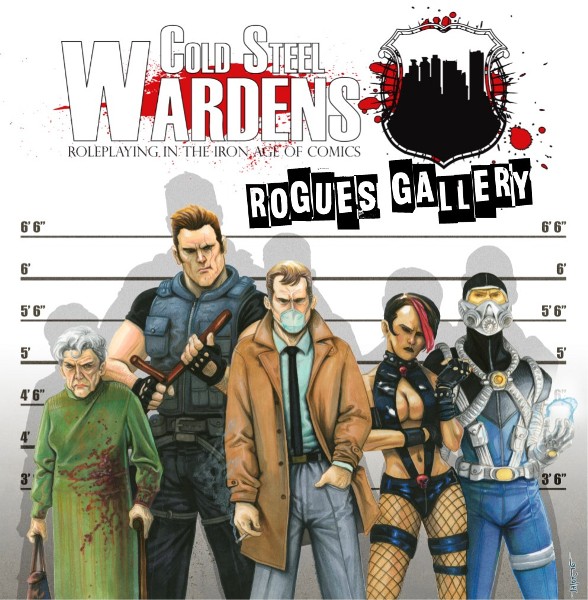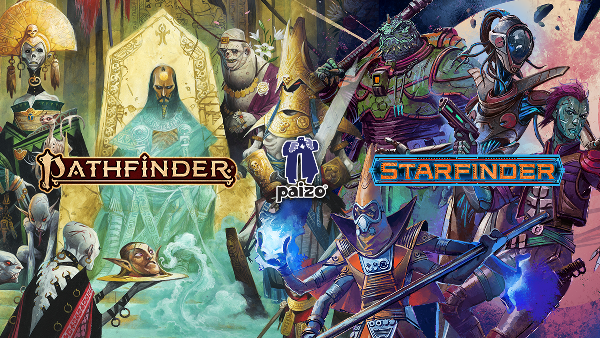Describe, Describe, Describe
By Aaron T. Huss
You’ve just released a new product and can’t figure out why it’s not moving well. After ensuring you marketed the product appropriately and announced its release, take a deep look at your product description. In an industry where PDF and Print-on-Demand purchase is so popular, you can’t exactly hold a book in your hands before making a purchase if the book is only purchased online. To remedy this, you put together a detailed description to better explain what the potential customer is going to get. Let’s break down three areas that can be used for descriptions.
INTRODUCTION
A good way to grab the customer’s attention is to begin your description with something catchy or some type of reference. This can be as simple as extracting a really good quote from the product or summarizing what the product is designed to be used for. Products that supplement game settings could start be reintroducing the setting. Campaign settings for rule systems could use a description of the genre of the setting. Adventures may find it beneficial to use a quote that introduces the storyline of the adventure. Regardless of what you use, the introduction is there to grab the readers attention and keep them moving along to read the rest of the description.
The introduction doesn’t necessarily have to describe what’s inside the product, rather it should present a method of drawing the eyes of the customer to that product in the hopes of a purchase. Of course the introduction should relate to the product, but it doesn’t necessarily have to specify the product’s content. For instance, products that belong to a series of supplements may use the introduction to describe that series. If the product is part of a campaign, this would be a good place to describe the overall campaign or at least the series of encounters found within that module. Avoid getting into too much detail in the introduction, that’s what the OVERVIEW is for. You simply want a couple sentences that draws the customer in with the hopes they will continue reading and find out what is actually inside this product they are potentially going to purchase.
OVERVIEW
The overview is a couple sentences that summarizes what’s in side the product. For campaign settings, this is where you would give the technical description of what the setting represents and what game-play can be expected (you can also include a blurb about what type of characters are possible). For adventures, you may give the specifics about the type of adventure it is (such as sandbox, exploration, investigation, etc.) with bits about the theme (don’t giveaway the storyline though). The overview should be a simple explanation that state “This book is about these things and here’s what you can expect.” If the customer was drawn in by the introduction, then the overview tells them about what they are buying and essentially provides a reason why they may want to buy it.
Properly creating an overview is very critical in that you don’t want to mislead the customer nor do you want to provide so little information that they don’t know what they’re buying. In this electronic world, a customer cannot flip through every page of a book to see what content is inside and instead relies on the overview to know what they’re getting. If the overview is poorly written or non-existent, customers may second-guess their purchase and wait for someone else to purchase and review it before making a further decision. If you really want to land those early purchases, create a good overview that explains the purpose of the product and (potentially) why the customer would want to buy it.
CONTENTS
Not everyone likes to share the contents of their products. I’m not sure why as it can only serve to enhance the introduction and overview with actual details of the content inside. For adventures, this may giveaway too much of the storyline, but for everything else, why not?
When adding a listing of contents to your description, you are taking the time to specifically point out the different chapters or sections within the book along with a one-sentence description of what they are. This can be done in different ways including narrative, paragraph, or bullet list. Regardless of how you do it, it’s purpose is to further the reasons why a customer would want to buy the product. You are very specifically stating “These are the chapters and here’s what each one represents.”
So why can contents be so important? It removes some of that second-guessing many customers do. If a potential customer looks at a product online and is unsure if it contains the player options they are looking for in addition to the GM options, the contents can specifically point that out, thus removing all doubt. These are the items you can better or further describe outside of the introduction and overview so that the customer knows exactly what they’re buying. Once they get to the contents, they may find an entry that is exactly what they’ve been looking for and make the purchase. If they didn’t know about that one chapter buried deep in the product that doesn’t come out in the overview, you may lose the sale or the customer may simply find another way to add that bit to their game.
DON’T FORGET!
Remember, descriptions are just as important as marketing from a sales stand-point, especially in an industry where PDF and POD are so popular. Of course, you also have to make sure the interior of the product stands-up to the hype you’ve created through marketing and describing, but at least your customers will be making a more informed decision about their purchase.


